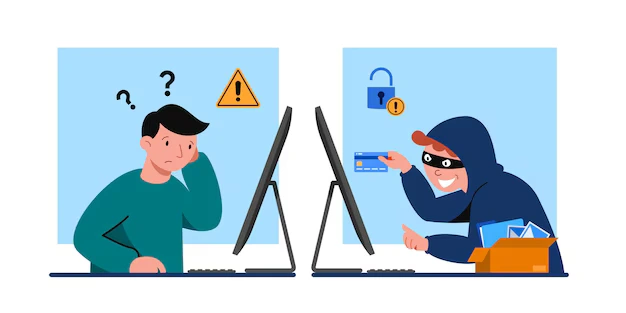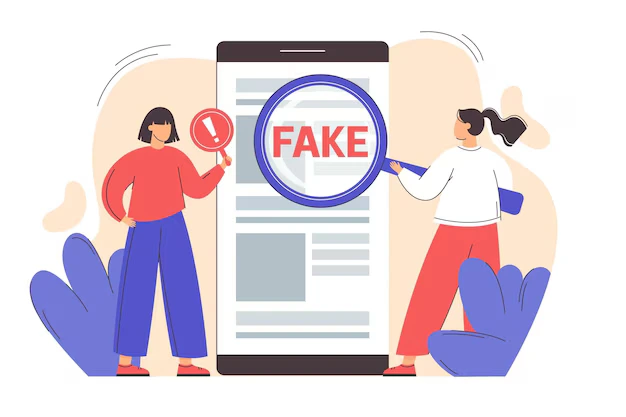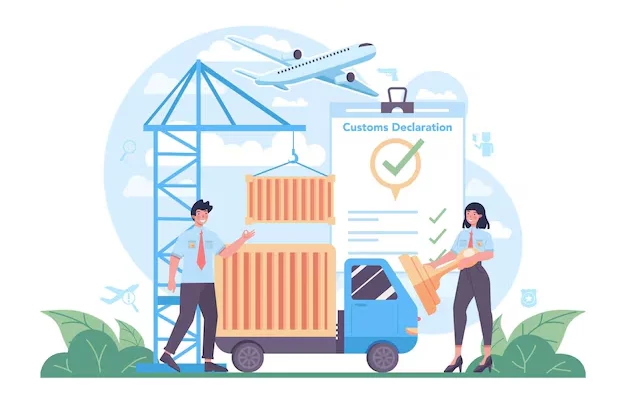How to identify airpod original vs fake? Counterfeit AirPods are now common across online marketplaces and informal channels. Many fake airpods look convincing, yet they typically skip Apple’s quality, safety testing, and ecosystem features. This guide shows practical, reliable checks you can perform before or immediately after purchase to confirm authenticity.
Protect Your Brand & Recover Revenue With Bytescare's Brand Protection software
What Are Fake AirPods?
Fake AirPods are knockoff versions of Apple’s earbuds. They copy the look—and sometimes a couple of headline features—but they’re built by unauthorised makers and priced to tempt. At a glance, they can pass; in day-to-day use, they usually don’t, especially in terms of quality, performance, and reliability.
The packaging may look the part. The cracks show up once you use them: thinner sound with weak bass, poor isolation, and batteries that give up early. The build is another tell—lighter cases, flimsy hinges, plastics that scuff or feel rough in the hand.
Connectivity gives a big clue. Real AirPods pair instantly with Apple gear, respond to “Hey Siri,” and hand off cleanly between iPhone, iPad, and Mac. Clones act like basic Bluetooth buds—slow, glitchy, and missing support or warranty from Apple if anything breaks.
You’ll often see sellers soften the pitch with words like “replica” or “AirPod-like.” The discount is the bait; the trade-off is real: a weaker experience and a product that rides on someone else’s IP, propping up a counterfeit market instead of the brands that do the hard work.
Why Fake AirPods Are a Problem
Impact on consumers. Fake airpods often use sub-standard components and unverified lithium-ion cells, raising risks of overheating, fire, or early failure. Regulators and safety bodies repeatedly warn that suspect electronics present shock, fire, and burn hazards, especially where batteries and chargers are involved. Poor tuning and distorted output can also push listeners to raise the volume, increasing the risk of noise-induced hearing damage over time.
Impact on brands. Counterfeits degrade trust, appropriate trademarks, and siphon legitimate sales—core IP-enforcement concerns. For copycat risks, see Bytescare’s resources on copyright and trademark infringement and our Brand Protection Services for takedown and monitoring options.
Protect Your Brand & Recover Revenue With Bytescare's Brand Protection software
Intellectual Property and Trademark Infringement
Think of intellectual property, or IP, as the rules that protect ideas. It covers the stuff people dream up—brand names, logos, product designs, even entire inventions. When someone slaps a logo on a product that isn’t theirs and makes people believe it’s the real thing, that’s trademark infringement.
Take AirPods. Apple’s bitten-apple logo and the name itself are protected trademarks. Only Apple and its official partners are allowed to sell the genuine ones. Yet walk through a flea market or scroll a sketchy online shop and you’ll see the same design, the same logo, even the same box art being reused. Buyers think they’ve landed a bargain, but in truth, they’ve picked up a fake—and Apple loses trust and money in the process.
Here’s the thing: Apple spends a fortune on design, engineering, and promotion just to make sure its products work as promised. Counterfeits don’t put in that effort. They cut corners with cheap parts and quick fixes, which is why they crumble so fast. For sellers, it isn’t harmless—lawsuits, heavy fines, and in some countries even criminal charges are all very real possibilities.
Apple doesn’t sit quietly either. They partner with law enforcement, run raids, and chase down fake sellers across borders. And it’s not just about protecting profits. Respecting IP means fair competition, rewarding the people who actually innovate, and giving buyers confidence that what they’re holding in their hands is the real deal.
Key Indicators to Spot Fake AirPods

Packaging and Presentation: How to Spot Fake AirPods
- Typos, off-white box colour, or low-resolution printing are common red flags.
- Serial number labels on the box should be cleanly printed and match the numbers you’ll find in iOS/macOS and inside the case.
Independent teardown and authentication guides often flag the same red flags—fuzzy or misaligned printing, sloppy shrink-wrap, and labels that don’t match.
Build Quality and Design: AirPods Original vs Fake
Look closely at small tolerances Apple usually nails:
- Case hinge & pairing button: genuine units have smooth, flush parts; fake airpods often show rough edges or wobble.
- Status LED window: on originals, the LED is clean and focused; fakes often “bleed” light through plastic.
- Charging port finish: On genuine AirPods, the port ring and inner plastic are cleanly milled with crisp edges and even gaps. If you run your finger along the case, real ones are sleek, while fakes can feel scratchy, with rough seams or leftover plastic.
Sound and Performance: How to Identify Fake AirPods
So, how to identify fake airpods? Here are three pointers to differentiate between the airpod original vs fake airpods:
- Pairing and switching: Genuine AirPods trigger the instant iOS pairing card and auto-switch via iCloud across your iPhone, iPad, and Mac; fakes pair like generic Bluetooth—no animation, slow/manual switching, and frequent drop-offs.
- ANC/Transparency (Pro models): On knockoffs, these modes are weak or just “simulated.” Toggling them barely changes outside noise, unlike the clear difference you get on genuine Pros.
- Firmware updates (fakes typically can’t receive Apple firmware).
Hands-on testing by hardware reviewers consistently notes missing Find My integration and unreliable feature sets on counterfeits.
Serial Number and Authentication: How to Check If AirPods Are Original
Here are a few pointers on how to check if AirPods are original or not:
- Find the serial number in iOS: Settings → Bluetooth → tap the i next to your AirPods; on Mac: System Settings → Bluetooth → i. You’ll also find it under the case lid (and on the original box/receipt).
- Verify it with Apple: enter the serial at Apple’s official coverage checker. If Apple can’t validate it or the model/coverage looks wrong, treat it as suspicious.
- Cross-match: the serial on the box, case, and iOS/macOS should match exactly.
- Use Find My as a second signal: genuine AirPods integrate with Apple’s Find My (location, sound, Lost Mode; model-specific capabilities). Most fakes don’t appear here or only mimic limited behaviour.
Important: Some sophisticated clones may recycle real serials from genuine units. That’s why you should combine checks—serial verification + Find My behaviour + build inspection.
Protect Your Brand & Recover Revenue With Bytescare's Brand Protection software
Consumer Protection Laws & Buyer Risks
Consumer protection laws are there for one reason: to keep everyday shoppers safe. They’re meant to stop shady ads, unfair tricks, and unsafe products from slipping through. And when we’re talking about counterfeits—like fake AirPods—these protections really show their value, because the risks are real.
No real safety checks.
Here’s the blunt truth: fakes don’t go through Apple’s testing. That’s why things like overheating buds or swollen batteries happen more often. And once that happens, you’re stuck. There’s no warranty card, no Apple service centre, no backup plan.
The sales pitch sounds too good.
Ever notice sellers call them “high-quality replicas” or just flat-out say they’re real? That’s where they cross the line. Consumer laws say products must be described honestly. But with counterfeits, you’re usually left with something that looks convincing in photos but fails once you start using it.
What if you already bought them?
Most countries give you the option to report the seller. Agencies can investigate and fine people pushing fakes. Still, it’s tough to get your cash back if the seller hides behind an online profile or deletes their shop overnight. On top of that, giving your payment info to a shady site risks way more than a pair of earbuds—you’re opening the door to scams or identity theft.
Consumer Protection Laws and Buyer Risks

Consumer protection laws are there for one reason: to keep everyday shoppers safe. They’re meant to stop shady ads, unfair tricks, and unsafe products from slipping through. And when we’re talking about counterfeits—like fake AirPods—these protections really show their value, because the risks are real.
No real safety checks.
Here’s the blunt truth: fakes don’t go through Apple’s testing. That’s why things like overheating buds or swollen batteries happen more often. And once that happens, you’re stuck. There’s no warranty card, no Apple service centre, no backup plan.
The sales pitch sounds too good.
Ever notice sellers call them “high-quality replicas” or just flat-out say they’re real? That’s where they cross the line. Consumer laws say products must be described honestly. But with counterfeits, you’re usually left with something that looks convincing in photos but fails once you start using it.
What if you already bought them?
Most countries give you the option to report the seller. Agencies can investigate and fine people pushing fakes. Still, it’s tough to get your cash back if the seller hides behind an online profile or deletes their shop overnight. On top of that, giving your payment info to a shady site risks way more than a pair of earbuds—you’re opening the door to scams or identity theft.
How to Buy Genuine AirPods?

Trusted Retailers and Online Stores: Where to Buy Genuine AirPods
- Buy direct from Apple (Apple Store Online India or Apple Retail) or use Apple’s Authorised Reseller locator to find verified outlets.
What to Look for When Buying AirPods Online to Avoid Fake Products
- Pricing that’s too good to be true is a classic red flag; compare against Apple MRP.
- Don’t skip checking whether the seller gives a GST invoice and offers a fair return window.
- Unbox on video and check: pairing animation, Settings → Bluetooth → i details, Find My presence, and serial validation the day it arrives.
Avoid “unsealed but brand-new” claims and marketplace sellers with thin feedback.
How to Avoid Buying Fake Airpods?
You don’t need special tools to dodge fakes—just a few careful habits. Keep these in mind and you’ll avoid most counterfeits.
Buy from Authorized Retailers
Buy from the Apple Store, apple.com, or an Apple Authorized Reseller. Skip random third-party listings you can’t verify.
Research Prices
Deals that look too good to be true should be avoided. Genuine AirPods usually cost around certain prices, so if you see one for a lot less than that, it’s a sign that it might not be real.
Examine Product Listings
Carefully review product descriptions and images when shopping online. Look for clear, high-quality photos that accurately represent the product. Be cautious of vague descriptions or low-resolution images.
Check Reviews and Ratings
Before buying from a third-party seller, check customer reviews and ratings. Authentic sellers usually have positive feedback, while counterfeit sellers may have numerous complaints.
Inspect Packaging
If you receive the product, examine the packaging closely. Authentic AirPods come in high-quality packaging sealed in Apple logos and product information. Counterfeit packaging may show signs of poor quality or misprints of warranty status.
Verify Serial Numbers
Every genuine pair has its own serial. After unboxing, find it in Settings → Bluetooth (tap the i) or under the case lid, make sure it matches the box, then confirm it on Apple’s coverage page.
Beware of Knockoff Product
Know the features and appearance of genuine AirPods. Familiarise yourself with their complex device design, features, and functionality to spot discrepancies.
The Role of Customs in Stopping Counterfeit AirPods

Customs authorities play a vital role in stopping counterfeit products, including fake AirPods. By enforcing intellectual-property and product-safety rules at the border, they keep bad devices out of the market and protect everyday buyers.
Their involvement is essential for maintaining fair trade, preserving brand trust, and shielding consumers from unsafe or unreliable goods.
Import Inspections
At airports, seaports, and courier hubs, officers screen paperwork and parcels side-by-side. Boxes are X-rayed or opened; labels, fonts, barcodes, and serial formats are checked against what the brand actually uses. Catching a shipment here stops fakes long before they reach a storefront or a doorstep.
Collaboration with Brands
Customs doesn’t work in the dark. Rights holders share quick ID “look books,” sample photos, and serial/label patterns, and many keep a hotline for on-the-spot checks. Short trainings give officers the telltale cues—misprinted trays, off-spec hinges, the wrong charging port finish—so decisions are faster and more accurate.
Legal Authority
If goods test out as counterfeit, officers can detain, seize, and order destruction under IP rules. Re-export isn’t a loophole for counterfeits—once confirmed fake, they don’t go back into circulation.
Consumer Awareness
Many agencies also educate buyers—short advisories, airport notices, and social posts that explain how to tell genuine from fake, the safety risks of poor batteries/chargers, and why the warranty won’t apply to copies.
Reporting and Enforcement
Seizure data isn’t just paperwork. It maps routes, shippers, and product types so enforcement can target the networks behind counterfeits—not just single parcels. These insights also feed marketplace takedowns and future border checks.
What’s Next?
Yes, selling fake AirPods is unlawful and invites penalties. It also damages reputation and puts customers at risk. The practical path is compliance—buy from approved distributors, document every batch (GST + serials), and avoid grey-market stock. Brands should pair monitoring with takedowns and border recordals; for process help, see Bytescare’s guides on copyright and trademark infringement.
Protecting your brand involves asserting your rights. Bytescare’s Brand Protection Solutions simplify issuing DMCA takedown notices, safeguarding your identity and trademarks from unauthorised use.
Ensure your intellectual property rights are respected. Contact us to learn how we can help you maintain your brand’s integrity and protection.
Key Takeaways:
- Apple’s marks are protected; sell copies and you’re in infringement territory.
- Misleading buyers risks consumer-law action and breaks trust.
- Customs and police can take the stock and press charges—fines and jail are on the table.
The Most Widely Used Brand Protection Software
Find, track, and remove counterfeit listings and sellers with Bytescare Brand Protection software

FAQs
What’s the difference between fake AirPods and real ones?
What can you do if someone sells you fake AirPods?
If you receive fake AirPods, contact the sketchy seller and place the return request for a refund. If unsuccessful, report the issue to the platform where you purchased it and file a complaint with consumer protection agencies to seek further action.
Are counterfeit AirPods cheaper?
Usually, yes—unusually low prices strongly correlate with counterfeits. Use Apple’s listed pricing as a baseline and be cautious when offers are far below market.
Can counterfeit AirPods harm my device?
How do I check if my AirPods are original using the serial number?
How can I tell if AirPods are fake?
Check the box and price first—typos, fuzzy printing, messy wrap, or a deal far below Apple’s MRP are red flags. In hand, the hinge should be smooth, seams flush, no LED “light bleed,” and the charging port neatly finished; fakes feel lighter or rougher. Pair with an iPhone—genuine shows the animation plus model/serial/firmware; the serial should match the case/box and validate on Apple’s site; it should appear in Find My (and ANC/Transparency should noticeably work on Pros). Generic names, missing features, or flaky performance usually mean fake.
Ready to Secure Your Online Presence?
You are at the right place, contact us to know more.

